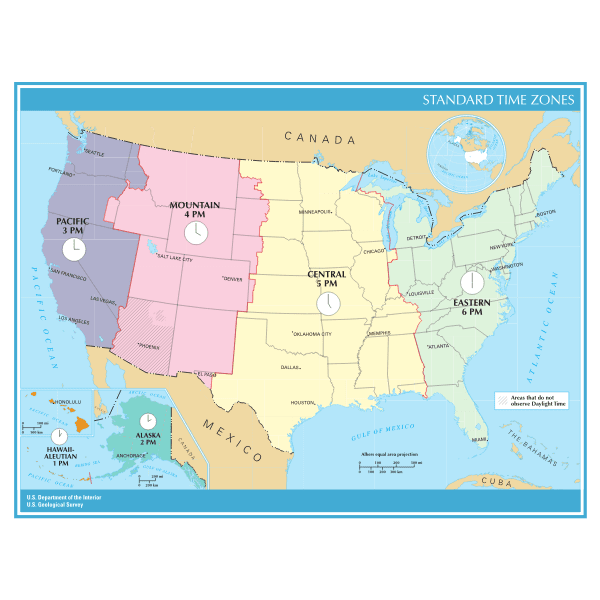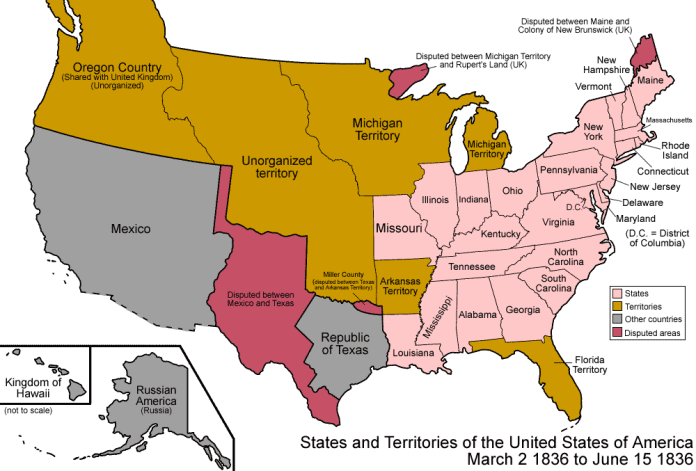Last Updated on August 7, 2024 by Asfa Rasheed
Table of Contents
A brief Introduction to the time difference between Michigan and Hawaii
The time difference between Michigan and Hawaii results from the two locations being in different time zones. Michigan is located in the Eastern Time Zone, four hours ahead of the Coordinated Universal Time (UTC-4) during standard time and five hours ahead during daylight saving time (UTC-5). Hawaii is 10 hours behind Coordinated Universal Time (UTC-10) during normal time and 9 hours behind during daylight saving time (UTC-9), as it is in the Hawaii-Aleutian Time Zone. Therefore, if it’s noon in Michigan, it’s only 6 am in Hawaii. Knowing time differences between places is essential for communication or travel.
For instance, if you’re planning a trip from Michigan to Hawaii, you must factor in the time difference when scheduling your activities. You may need to adjust your sleeping and waking times to adapt to the new time zone and avoid jet lag. Similarly, if you’re communicating with someone in Hawaii from Michigan, you must be mindful of the time difference to avoid scheduling calls or meetings at inconvenient times. It’s essential to confirm the local time in both locations to avoid confusion and ensure everyone is on the same page.

Comparison Table
| Location | Time Zone | Daylight Saving Time (DST) |
| Michigan | Eastern Time Zone (ET) | Observed from the second Sunday in March to the first Sunday in November |
| Hawaii Hawaii-Aleutian | Standard Time (HST) | No Daylight Saving Time observed |
This table shows the time zone for each location and whether or not Daylight Saving Time is observed. Michigan is in the Eastern Time Zone, three hours ahead of Hawaii’s Hawaii-Aleutian Standard Time.
What is important?
Understanding time differences is particularly important for businesses with international operations. Different time zones can affect work schedules, deadlines, and financial transactions. Therefore, companies must account for time differences when scheduling meetings or dealing with partners in different countries.
What causes time differences between locations?
The Earth’s rotation is the primary cause of time differences between locations. It means the sun appears to rise and set at different times in different global areas. To account for these time differences, the world is divided into 24 time zones, each roughly corresponding to a longitudinal section of the Earth. Each time zone is defined by a specific offset from Coordinated Universal Time (UTC), the standard international time reference. The time zones generally align with political boundaries, such as country borders, to facilitate practical use.
Rotation of the earth and time zones
Time zones are calculated based on the longitude of each location. The Earth’s circumference is 360 degrees, so there are 24 time zones, each spanning 15 degrees of longitude. The Prime Meridian, an imaginary line that runs through the Royal Observatory in Greenwich, England, is the reference point for time zones. Locations east of the Prime Meridian have time zones ahead of UTC, while those to the west have time zones behind UTC.
How are time zones calculated and determined?
Determining time zones can be a complex process, as there are several factors to consider, including historical and political reasons and practical considerations such as transportation and communication. As a result, some countries have adopted non-standard time zones or have changed their time zones over time. It means some locations have two different time zones, depending on whether DST is in effect. Local governments usually determine the decision to adopt DST, and the dates and times of the change can vary from location to location.
Time difference between Michigan and Hawaii
The time difference in hours and minutes
The time difference between Michigan and Hawaii is significant, with Michigan being four hours ahead of Hawaii during standard time and five hours ahead during daylight saving time. This means that when it is 12 pm in Michigan, it is only 7 am in Hawaii during standard time and 6 am during daylight saving time.
Comparison of local times in both locations
To compare the local times in both locations, it’s essential to know their time zones. Michigan is located in the Eastern Time Zone, while Hawaii is in the Hawaii-Aleutian Time Zone. The Eastern Time Zone is three hours ahead of the Pacific Time Zone, which includes Hawaii. Therefore, at 12 pm in Michigan, it is 9 am in California, the Pacific Time Zone, and 6 am in Hawaii.
The time difference between Michigan and Hawaii can significantly impact communication and travel between the two locations. For example, if you plan to travel from Michigan to Hawaii, you must consider the time difference when scheduling your activities. You may need to adjust your sleeping and waking times to adapt to the new time zone and avoid jet lag.
The effect of time difference
The time difference can also affect the efficiency and productivity of businesses that operate across different time zones. If you’re doing business with partners or clients in Hawaii from Michigan, you must know the time difference to ensure you’re available during their working hours. Similarly, if you’re conducting business in Michigan from Hawaii, you must adjust your schedule to match the local business hours.
If you’re communicating with someone in Hawaii from Michigan, you must be mindful of the time difference and avoid scheduling calls or meetings at inconvenient times. It’s essential to confirm the local time in both location must confusion and ensure that everyone is on the same page. Moreover, the time difference can impact financial transactions and trading activities. For example, stock market trading hours in Michigan may not align with those in Hawaii, which can affect investment decisions and outcomes.
Daylight Saving Time and its impact
Daylight Saving Time (DST) is advancing the clock by one hour during the summer months to extend the amount of daylight available in the evenings. The primary purpose of DST is to save energy and reduce electricity consumption by taking advantage of natural light. DST can significantly impact the time difference between Michigan and Hawaii. During DST, Michigan is five hours ahead of Hawaii, whereas during standard time, it is four hours ahead. This means that when it is 12 pm in Michigan during DST, it is only 7 am in Hawaii, while midnight standard time is 6 am.
How does DST affect the time difference between Michigan and Hawaii?
The starting and ending dates of DST vary in different locations. The impact of DST on the time difference can affect various aspects of life, including communication, travel, and business. For instance, if you plan to travel from Michigan to Hawaii during DST, you must consider the time difference when scheduling your activities. You may need to adjust your sleeping and waking times to adapt to the new time zone and avoid jet lag.
When DST starts and ends in each location?
DST can also affect business operations that operate across different time zones. For example, suppose you’re doing business with partners or clients in Hawaii from Michigan during DST. In that case, you’ll need to know the time difference to ensure you’re available during their working hours. Similarly, if you’re conducting business in Michigan from Hawaii during DST, you must adjust your schedule to match the local business hours. Moreover, the impact of DST on the time difference can also affect financial transactions and trading activities. For instance, stock market trading hours in Michigan may not align with those in Hawaii during DST, which can affect investment decisions and outcomes.
Tools and resources for calculating time differences
Online time zone converters and calculators
Daylight Saving Time (DST) is advancing the clock by one hour during the summer months to extend the amount of daylight available in the evenings. The primary purpose of DST is to save energy and reduce electricity consumption by taking advantage of natural light.
Other resources for tracking time differences
DST can significantly impact the time difference between Michigan and Hawaii. During DST, Michigan is five hours ahead of Hawaii, whereas during standard time, it is four hours ahead. This means that when it is 12 pm in Michigan during DST, it is only 7 am in Hawaii, while during standard time, it is 6 am. The starting and ending dates of DST vary in different locations. In Michigan, DST starts on the second Sunday in March and ends on the first Sunday in November. DST is not observed in Hawaii, and the time remains constant throughout the year.
Tips for avoiding confusion and scheduling errors
- The impact of DST on the time difference can affect various aspects of life, including communication, travel, and business. For instance, if you plan to travel from Michigan to Hawaii during DST, you must consider the time difference when scheduling your activities. You may need to adjust your sleeping and waking times to adapt to the new time zone and avoid jet lag.
- If you’re communicating with someone in Hawaii from Michigan during DST, you must be mindful of the time difference to avoid scheduling calls or meetings at inconvenient times. It’s essential to confirm the local time in both locations to avoid confusion and ensure everyone is on the same page.
- DST can also affect business operations that operate across different time zones. For example, suppose you’re doing business with partners or clients in Hawaii from Michigan during DST. In that case, you’ll need to know the time difference to ensure you’re available during their working hours. Similarly, if you’re conducting business in Michigan from Hawaii during DST, you must adjust your schedule to match the local business hours.
- The impact of DST on the time difference can also affect financial transactions and trading activities. For instance, stock market trading hours in Michigan may not align with those in Hawaii during DST, which can affect investment decisions and outcomes.
Conclusion
In conclusion, understanding time differences is crucial when communicating or traveling across time zones. By clearly understanding the time difference between locations, you can avoid confusion and scheduling errors and ensure your activities run smoothly. One of the critical factors that cause time differences between locations is the rotation of the Earth and the resulting time zones. Time zones are calculated based on the position of the sun and the Earth’s orbit, and each time zone is approximately one hour apart from the next.
When calculating the time difference between Michigan and Hawaii, the two locations are separated by a significant time difference of three hours. It can significantly impact communication and travel between the two locations, and it’s essential to factor in any daylight-saving time changes that may occur in both areas.
Apart from that, if you want to know about The Most Common Mistakes First Time Travelers Make, then please visit our Travel category.
FAQs
Time differences are caused by the Earth’s rotation and the resulting time zones. Each time zone is approximately one hour apart from the next.
You can calculate the time difference between two locations using online time zone converters or smartphone apps that allow you to enter the location and time in one location and calculate the corresponding time in another.
Daylight Saving Time can significantly impact time differences, as it causes the local time in a particular location to shift forward or backward by one hour. It’s important to factor in any DST changes when calculating time differences.
Understanding time differences is essential for scheduling meetings, flights, and other activities across different time zones. It helps avoid confusion and scheduling errors and ensures everyone is on the same page.
To avoid confusion due to time differences, it’s essential to confirm the local time in both locations, use a 24-hour clock, and communicate the time zone and time differences when scheduling activities with people in different areas.


























